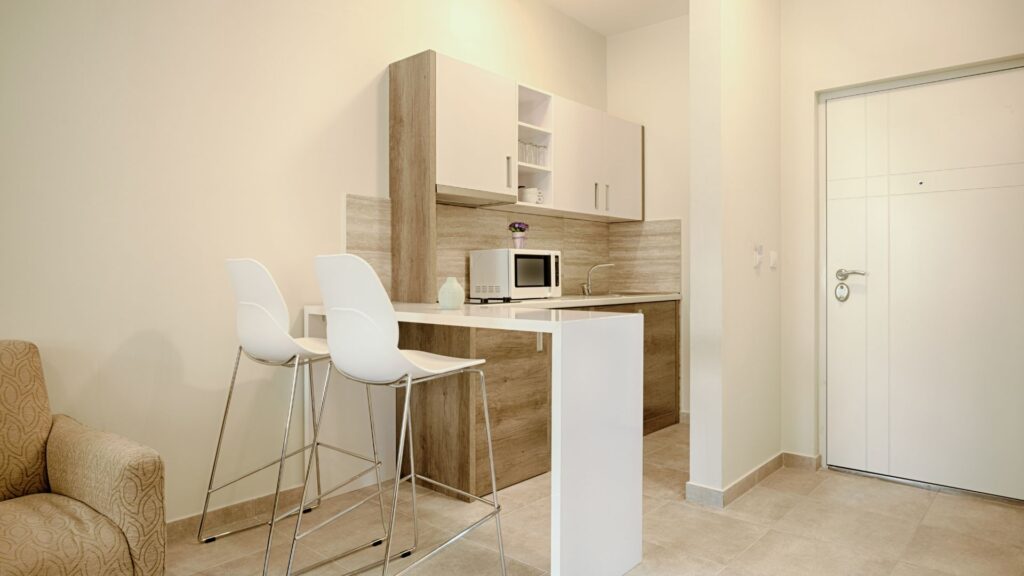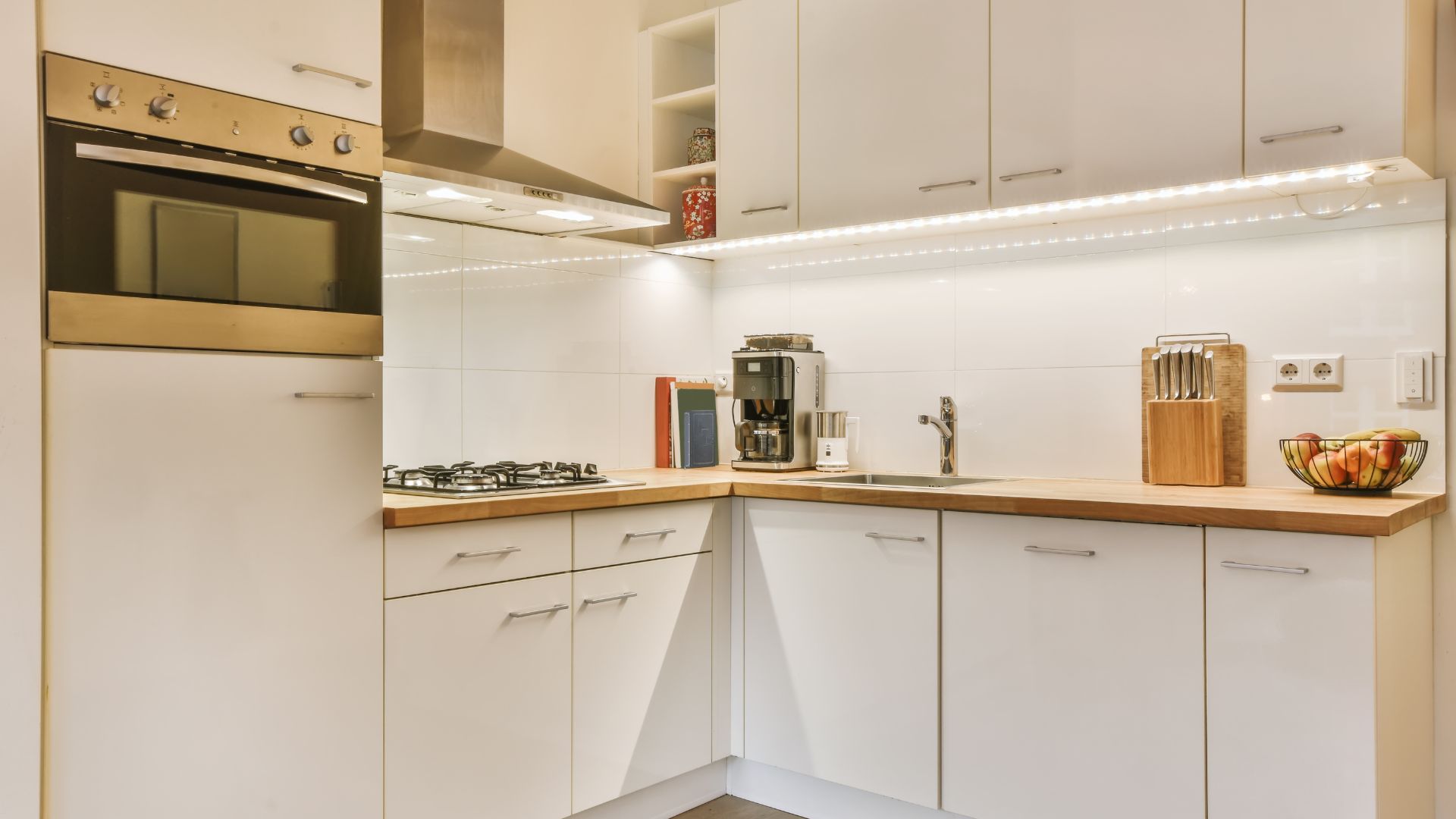In today’s interior design landscape, open shelving has emerged as a popular choice for maximizing space and adding character to small kitchens. Unlike traditional closed cabinets, open shelving offers an opportunity to showcase curated collections, display decorative items, and create an illusion of spaciousness. However, while the concept of open shelving may seem appealing, it’s essential to weigh its benefits and challenges carefully before integrating it into your kitchen design.
Open shelving presents a versatile solution for small kitchens, allowing homeowners to optimize every inch of available space while maintaining a visually appealing aesthetic. By strategically organizing and styling open shelves, homeowners can achieve a balance between functionality and design, creating a kitchen that feels both practical and inviting. In this blog post, we’ll explore the concept of open shelving in small kitchens, discussing its advantages, practical considerations, design tips, maintenance strategies, and real-life examples to inspire your own kitchen remodel.
Maximizing Visual Space with Open Shelving
Open shelving offers a unique opportunity to maximize visual space in small kitchens by eliminating the visual bulk associated with traditional closed cabinets. By exposing the wall behind the shelves, open shelving creates an illusion of depth, making the kitchen feel larger and more spacious. Additionally, open shelves allow natural light to penetrate deeper into the space, further enhancing the sense of openness and airiness.
To maximize visual impact, it’s essential to carefully curate the items displayed on open shelves. Opt for a cohesive color palette and minimalistic approach to styling, avoiding clutter and overcrowding. Use a mix of practical kitchen essentials, such as dinnerware and glassware, with decorative elements like plants, artwork, and cookbooks to add visual interest. By striking the right balance between functionality and aesthetics, homeowners can create a visually stunning focal point in their kitchen while optimizing available space for storage and display.
Practical Considerations for Small Kitchen Storage
While open shelving offers many benefits in terms of visual appeal, it’s essential to consider practical storage needs when incorporating it into a small kitchen design. Unlike closed cabinets, open shelves expose items to dust, grease, and potential damage, requiring careful consideration of what to display and how to organize it. To address these challenges, homeowners can use a combination of open and closed storage solutions to optimize functionality while maintaining the desired aesthetic.
When selecting items to display on open shelves, prioritize frequently used kitchen essentials that are both practical and visually appealing. Consider investing in storage containers, baskets, and bins to keep smaller items organized and prevent clutter. For items that are less frequently used or prone to dust and grease, such as specialty cookware or pantry staples, opt for closed cabinets or drawers to protect them from environmental factors. By carefully balancing open and closed storage options, homeowners can create a functional and stylish kitchen that meets their unique needs and preferences.
Designing a Functional and Stylish Kitchen with Open Shelving
Integrating open shelving into a small kitchen design requires careful planning and consideration to ensure a cohesive and harmonious aesthetic. Start by assessing the available wall space and identifying areas where open shelves can be installed without overwhelming the room. Consider the overall style and theme of your kitchen, selecting shelving materials, finishes, and hardware that complement existing design elements.
When designing your open shelving layout, aim for a balanced and symmetrical arrangement that enhances the visual appeal of the space. Mix and match different shelf heights and widths to create visual interest, and consider incorporating decorative brackets or supports to add architectural detail. Experiment with the placement of items on the shelves, layering larger pieces at the back and smaller items towards the front to create depth and dimension.
Maintenance and Cleaning Tips for Open Shelving
While open shelving can enhance the visual appeal of a small kitchen, it also requires regular maintenance and cleaning to keep it looking its best. Dust, grease, and food particles can accumulate on exposed surfaces, detracting from the overall aesthetic and potentially compromising the cleanliness of stored items. To maintain open shelving, homeowners should establish a regular cleaning routine that includes dusting, wiping down surfaces, and organizing items as needed.
To make cleaning easier, opt for low-maintenance shelving materials such as stainless steel, glass, or sealed wood that can be easily wiped clean with a damp cloth. Remove items from shelves periodically to dust and clean both the surfaces and the items themselves. Consider investing in decorative storage containers or baskets to corral smaller items and prevent them from accumulating dust or cluttering the shelves. By staying on top of regular maintenance tasks, homeowners can ensure that their open shelving remains both functional and visually appealing for years to come.
Addressing Common Concerns and Challenges
While open shelving can be an effective way to maximize space and add style to a small kitchen, it also presents some common concerns and challenges that homeowners should be aware of. One of the primary concerns with open shelving is the risk of items falling or tipping over, particularly in households with young children or pets. To address this concern, homeowners can use secure mounting hardware and anchor shelves to the wall to prevent accidents.
Another challenge associated with open shelving is the potential for dust and grease buildup on exposed surfaces, which can detract from the aesthetic appeal of the kitchen. Additionally, some homeowners may be concerned about the perceived lack of privacy or organization that comes with open shelving, fearing that it may lead to a cluttered or disorganized appearance.
To address these concerns, homeowners can take proactive measures to mitigate potential drawbacks associated with open shelving. This includes implementing a regular cleaning and maintenance routine, using storage containers and baskets to organize smaller items, and carefully curating the items displayed on the shelves to maintain a cohesive and visually appealing aesthetic.
Real-Life Examples and Inspiration
To provide further inspiration and guidance, we’ve curated a selection of real-life examples showcasing the creative use of open shelving in small kitchen designs. From minimalist Scandinavian-inspired kitchens to eclectic bohemian spaces, these examples demonstrate the versatility and adaptability of open shelving in various design styles and settings. Explore these examples to discover innovative storage solutions, clever design ideas, and expert styling tips for integrating open shelving into your own kitchen remodel.
In conclusion, open shelving offers a practical and stylish solution for maximizing space in small kitchens while adding personality and charm to the room. By carefully considering practical storage needs, design aesthetics, and maintenance requirements, homeowners can create a functional and visually stunning kitchen that meets their unique lifestyle and preferences. Whether you’re looking to showcase your favorite cookware, display decorative items, or simply optimize storage space, open shelving provides endless possibilities for customization and creativity. Contact 7-Day Kitchen today to learn more about our kitchen remodeling services and how we can help you transform your space with innovative design solutions and expert craftsmanship.







